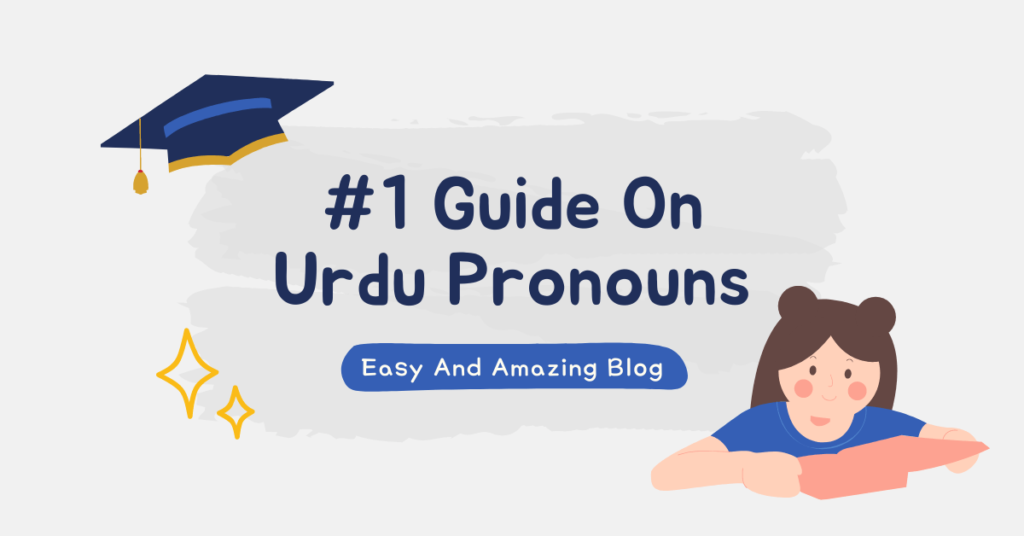A pronoun substitutes a noun, thus helping in writing a short and well-structured sentence. Let’s briefly explore Urdu pronouns and their usage in different sentences.
Traveling to an Asian country is very exciting as they are rich in their culture. You get the opportunity to learn more about their traditions, festivals, and foods. And if you know their native language before going there, that’s a plus point for you. That’s how you can easily communicate with native speakers and have a delightful conversation with them.
Urdu Language – Official Language Of Pakistan
Pakistan is a South Asian country. It shares its boundaries with India, China, Afghanistan, and Iran. The people of Pakistan speak Urdu as a national language. It is a bit common to normal spoken Hindi but different from literary written Hindi.
If you want to have a conversation with Pakistanis while staying there, you should learn some basics about the Urdu language. You can use the Ling app to learn this beautiful language. By learning, you will be able to understand Urdu pronouns, nouns, verbs, and prepositions.
Urdu Pronouns – Different Types Of Pronouns
There are various types of pronouns, each with its significance in the Urdu language. Relative pronouns, possessive pronouns, intensive, interrogative, demonstrative, indefinite pronouns, and personal pronouns are some of the Urdu pronoun categories.
Understand and get a knowledge of some most commonly used forms of Urdu pronouns easily with the help of the Ling app. But before we start the lesson, let’s learn some quick and basic facts about the Urdu language
Personal Pronouns
Pronouns primarily linked with one of three grammatical persons, first, second, or third Person, are called personal pronouns. Number, grammatical or natural gender form all influence the appearance of personal pronouns. Conjugated verbs following the pronouns are used according to the situation and mood.
1. First Person Personal Pronoun
“I and we” are the First-person pronoun in the nominative case. While in the Urdu possessive pronouns case, we use “My and our.” “Me and us” are written in an objective case. These are translated in Urdu as below:
| English | Urdu | Pronunciation |
| I | میں | Mein |
| My / Mine | میرا | Mera |
| Me | مجھے | Mujhe |
2. Second Person Pronoun
Following are the second-person pronouns in their respective cases.
Nominative case: You
Possessive case: Your
Objective case: You
We use second-person pronouns in the Urdu language as:
| English | Urdu | Pronunciation |
| You | تم | Tum |
| Your | آپ کا | Aap ka |
| You | تمہیں | Tumhe |
Formal, Informal, And Extremely Informal Form Of Personal Pronouns
“Aap” is used in formal situations, while “Tum” is an informal way of talking. The word that is used as an extremely informal form is “Tu.” It is one of the non-standard alternatives that is used while talking to friends. But the most commonly used form is “Aap,” which represents respect in Urdu grammar.
3. Third Person Pronoun
In nominative cases, “He, she, it, and they” are third-person pronouns. “His, hers, its and theirs” are used in possessive case while we write “Him, her, it and their” in the objective case.
For example, we can write “he” in these three cases in Urdu as follows:
| English | Urdu | Pronunciation |
| He | وہ | Wo |
| His | اس کا | Us ka |
| Him | اسے | Use |
The first word in the Third Person column indicates the usual form literary written Hindī or Urd form, whereas the second form (after the slash) shows the normal spoken Hindī or Urdu (Hindustani).
“He, him, his” is used for only one gender, that is the male gender. On the contrary, “she and her” are used for the feminine gender and are usually used for all females.
Objective case pronouns are also called accusative case or oblique case pronouns. The genitive case behaves the same as possessive pronouns.
Demonstrative Pronouns
These are the words that are used to point out something. These words include this, that, these, and those. Those and these are the plural form of pronouns that are used instead of a plural noun. In comparison, “this and that” are strictly singular pronouns. We can write Urdu translation of these demonstrative pronouns as follows.
| English | Urdu | Pronunciation |
| This, these | یہ | Yeh |
| That, those | وہ | Woh |
Reflexive Pronouns
A pronoun that finishes in “self” or “selves” and emphasizes its antecedent is known as a reflexive pronoun. First-person reflexive pronouns are “Myself and ourselves.” Second person reflexive pronoun is “yourself,” while third-person pronouns are written as “itself, herself, and themselves.”
| English | Urdu | Pronunciation |
| Myself | میں خود | Mein khud |
| Yourself | اپنے آپ کو | Apne aap ko |
| Themselves | خود | Khud |
Interrogative Pronouns
These are usually called question words that are used to ask questions. These interrogative pronouns include which, what, whom, whose, and who. On the other hand, the words that end with -ever are also indicated as interrogative pronouns. These are whomever, whoever, whatever, whichever, etc. We can write Urdu interrogative pronouns as below.
| English | Urdu | Pronunciation |
| Which | کونسا | Konsa |
| What | کیا | Kiya |
| Whose | جس کا | Jis ka |
| Whatever | جو بھی | Jo bhi |
Use Of Pronouns In different Sentences
In the following sentence, “Young people” is replaced by “they,” and that’s how a pronoun works.
“Young people are our future. They should work hard and avoid being bad guys.” You can write its Urdu translation as
نوجوان ہمارا مستقبل ہیں۔ انہیں سخت محنت کرنی چاہئے اور برے لوگوں سے بچنا چاہئے۔
You can pronounce it in Urdu as: “Nojawan hamara mustakbil hain. Inhe sakht mehnat karni chahye or bure logon se bachna chahye”
Learn Urdu With Ling App
I hope you have a broader knowledge of Urdu pronouns and their usage in oblique form, acquisitive case, and genitive case. If you want to learn Urdu more, you can use the Ling app by Simya Solutions.
The Ling app has an in-built chatbot system through which you can develop your conversational skills. Its mini-games and puzzles will help you learn in a more fun and entertaining environment. You can learn about Urdu verbs, conjugated verbs, prepositions, ergative prepositions, nouns, and other terms through this app.
If you want to try speaking phrases, you can read our blogs on “Basic Urdu words” and “Urdu vocab for transportation.” So, visit the Ling app website or download it from the app store today and start learning your target language.































































